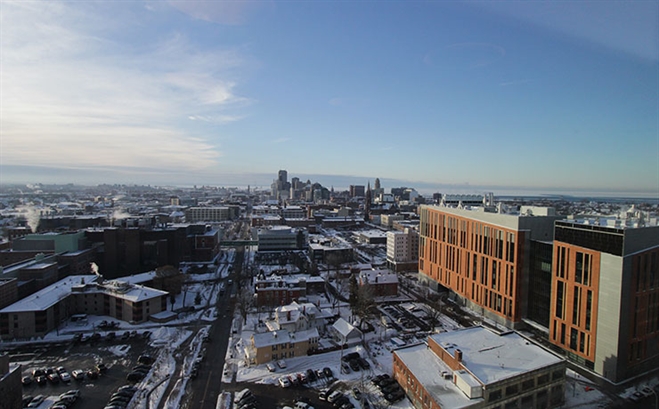Buffalo, NY, asks 'How Open is Open Data'
March 01, 2019 by Melissa Crowe

Photo: Invest Buffalo Niagra/Flickr
Kirk McLean knew that an open data portal for the City of Buffalo would provide oversight and open up a new dialogue with residents, but he never imagined a public skills gap would be a challenge.
But that's what McLean, director of Open Data Buffalo and chief of staff to the city's CIO, discovered last year.
"If the people to whom we're opening our data don't have the basic fundamentals to use it and make sense of it, how open is open data?" he asked.
Making Open Data Buffalo more accessible has been the guiding principle behind Data 101, a public data course designed to help residents develop the skills to be data-savvy.
When Open Data Buffalo was launched in February 2018, Mayor Byron W. Brown had lofty goals. It would give city departments "the ability to tell their everyday stories through interactive tables, charts, graphs, and maps," he said.
The mayor said the portal's creation would help the city "work smarter by increasing internal data sharing, improving workflow, and ending duplicative data collection."
And it did. But McLean saw another opportunity.
Now that the city has shifted from PDFs and other static formats to a machine-readable platform, how could businesses, researchers, and other organizations make the most of it — whether building apps or solving issues they care about.
"We invited City of Buffalo residents to come in and learn 'what is data,' talk to them about the functionality of the open data portal, and teach them how to build visualizations, and get a better handle on what's happening in their communities," McLean said.
Data 101 is the digital successor to the City's long-standing Citizen Participation Academy. For many years, that program gave residents a 'behind-the-curtain' look at city government. Attendees did police ride-alongs, toured the sewer treatment plant, attended Common Council meetings, and had face-to-face meetings with city officials.
When Data 101 launched in November, McLean didn't have a gauge on how many people would be interested. However, interest greatly exceeded the city's 20-student course capacity.
McLean said the spectrum was broad, with attendees of various ethnicities, ranging in age, and location across the city signing up.
"Our youngest student was 21 and our oldest student was 85," McLean said. "Our students were community liaisons, librarians, lawyers, and government workers. It was a diverse group which made for meaningful and enriching discussions."
Among the topics student groups looked at included the correlation between downtown parking capacity and the rate of citations issued, opportunities for infill housing development, and the locations of food deserts. They learned to filter data and layer data on top of maps, generate visualizations and gather new insights.
"My hope is that within the next five years, when people reach out to their elected representatives or attend a community meeting, they have real-life, real-time information about what's going on in their neighborhoods," McLean said. "Their ability to have more informed dialogues with anyone they want to have a discussion with will lead to more effective decision making from all levels within our city."